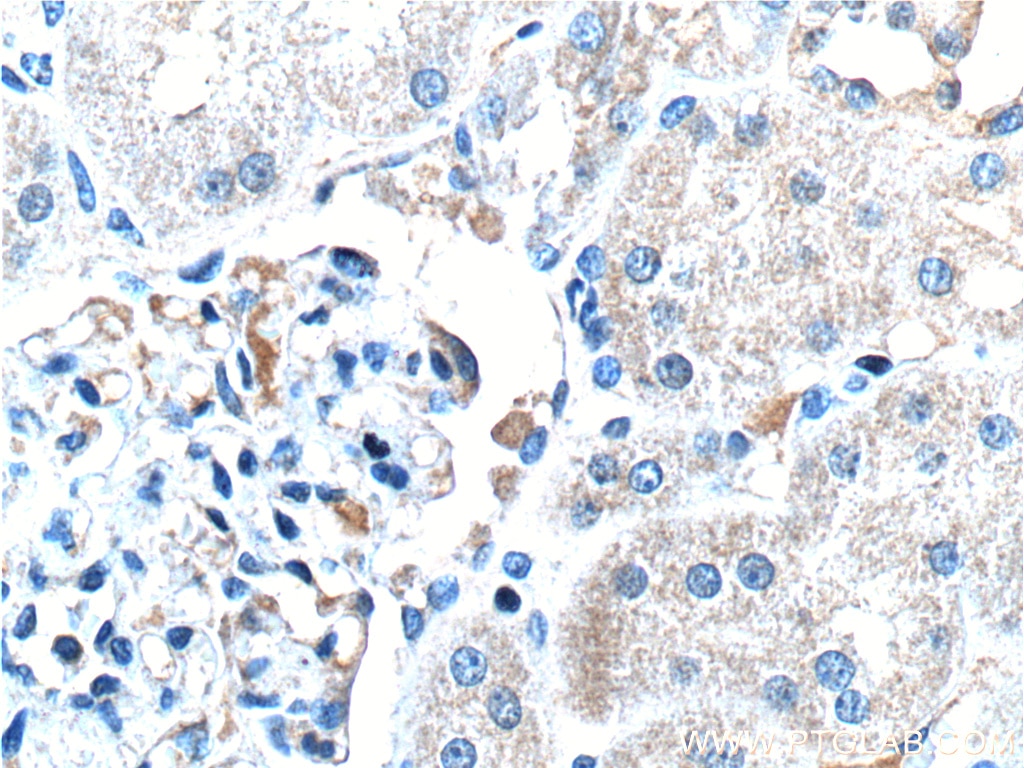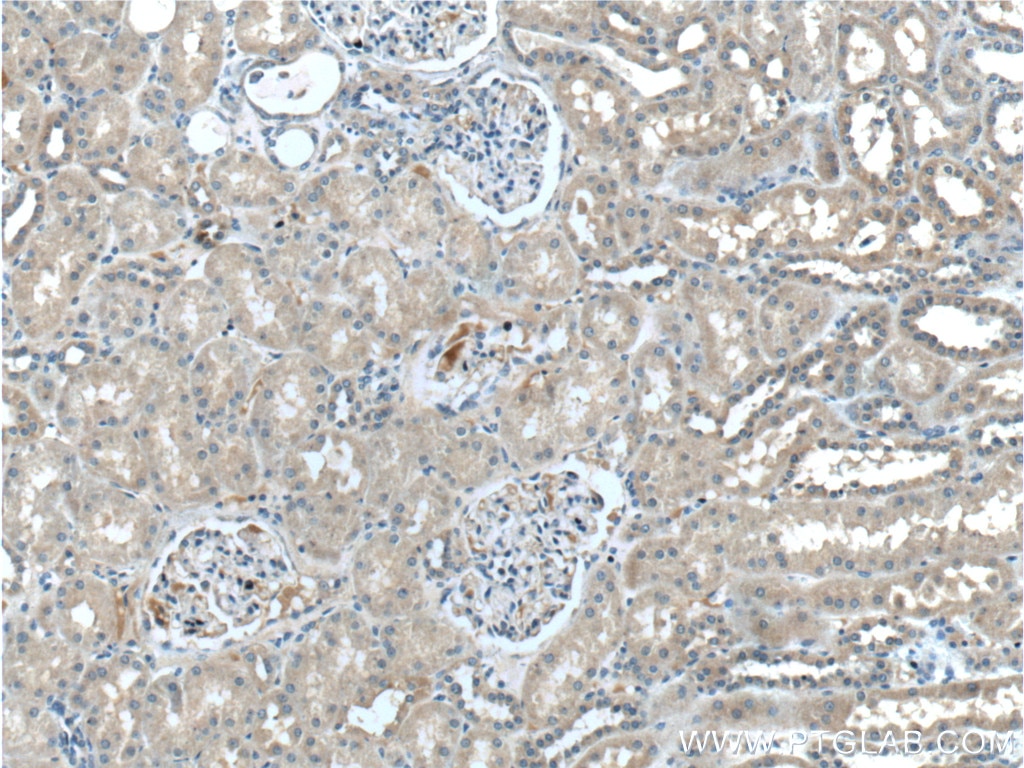MT1M Polyklonaler Antikörper
MT1M Polyklonal Antikörper für IHC, ELISA
Wirt / Isotyp
Kaninchen / IgG
Getestete Reaktivität
human und mehr (1)
Anwendung
WB, IHC, IF, ELISA
Konjugation
Unkonjugiert
Kat-Nr. : 17281-1-AP
Synonyme
Geprüfte Anwendungen
| Erfolgreiche Detektion in IHC | humanes Nierengewebe Hinweis: Antigendemaskierung mit TE-Puffer pH 9,0 empfohlen. (*) Wahlweise kann die Antigendemaskierung auch mit Citratpuffer pH 6,0 erfolgen. |
Empfohlene Verdünnung
| Anwendung | Verdünnung |
|---|---|
| Immunhistochemie (IHC) | IHC : 1:50-1:500 |
| It is recommended that this reagent should be titrated in each testing system to obtain optimal results. | |
| Sample-dependent, check data in validation data gallery | |
Veröffentlichte Anwendungen
| WB | See 5 publications below |
| IF | See 2 publications below |
Produktinformation
17281-1-AP bindet in WB, IHC, IF, ELISA MT1M und zeigt Reaktivität mit human
| Getestete Reaktivität | human |
| In Publikationen genannte Reaktivität | human, Maus |
| Wirt / Isotyp | Kaninchen / IgG |
| Klonalität | Polyklonal |
| Typ | Antikörper |
| Immunogen | MT1M fusion protein Ag11048 |
| Vollständiger Name | metallothionein 1M |
| Berechnetes Molekulargewicht | 61 aa, 6 kDa |
| GenBank-Zugangsnummer | BC028280 |
| Gene symbol | MT1M |
| Gene ID (NCBI) | 4499 |
| Konjugation | Unkonjugiert |
| Form | Liquid |
| Reinigungsmethode | Antigen-Affinitätsreinigung |
| Lagerungspuffer | PBS with 0.02% sodium azide and 50% glycerol |
| Lagerungsbedingungen | Bei -20°C lagern. Nach dem Versand ein Jahr lang stabil Aliquotieren ist bei -20oC Lagerung nicht notwendig. 20ul Größen enthalten 0,1% BSA. |
Protokolle
| PRODUKTSPEZIFISCHE PROTOKOLLE | |
|---|---|
| IHC protocol for MT1M antibody 17281-1-AP | Protokoll herunterladenl |
| STANDARD-PROTOKOLLE | |
|---|---|
| Klicken Sie hier, um unsere Standardprotokolle anzuzeigen |
Publikationen
| Species | Application | Title |
|---|---|---|
Autophagy Therapeutic targeting of the USP2-E2F4 axis inhibits autophagic machinery essential for zinc homeostasis in cancer progression. | ||
Environ Pollut Biotransformation of graphene oxide within lung fluids could intensify its synergistic biotoxicity effect with cadmium by inhibiting cellular efflux of cadmium. | ||
Clin Epigenetics Epigenetic reactivation of tumor suppressor genes with CRISPRa technologies as precision therapy for hepatocellular carcinoma | ||
ACS Nano Amplification of Metalloregulatory Proteins in Macrophages by Bioactive ZnMn@SF Hydrogels for Spinal Cord Injury Repair | ||
J Integr Med Aloin blocks the malignant behavior of lung squamous cell carcinoma cells and M2 macrophage polarization by modulating the NR3C2/MT1M axis | ||
Int J Mol Sci Specificity of the Metallothionein-1 Response by Cadmium-Exposed Normal Human Urothelial Cells. |



